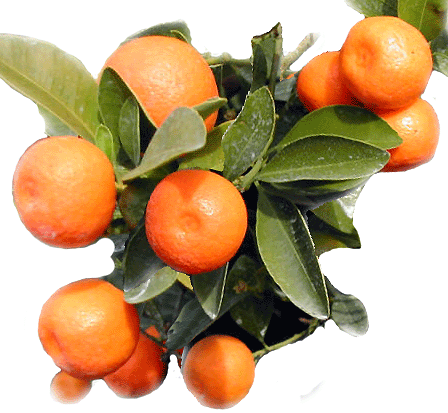|
|
|
|
 Calamondin Citrus madurensis Calamansi, Philippine Lime, Calamondin Orange, China Orange, Musk Lime, Panama Orange, Philippine Orange The calamondin is thought to have been native to China and then taken in early times to Indonesia and the Philippines. It became the most important Citrus juice source in the Philippine Islands and is widely grown in India and throughout southern Asia and Malaysia. Often grown as an ornamental in Florida and California this fruit is a central to the cuisine of the Philippines. This fruit provides the acid flavor that most cuisines call on lemons or citrus to provide and grows in climatic areas that lemons or limes can not due to lack of heat or rainfall. The calamondin looks like a small tangerine and contains several seeds. The skin and flesh have a deep orange color and have a flavor between an lemon and a lime. It is often squeezed over food just prior to eating to incorporate it enhancing flavor into a dish. Trivia - The fruit juice is used in the Philippines to bleach ink stains from fabrics. It also serves as a body deodorant.
|
